Chess Rules

The Beginner's StartUp
Lesson (1)The chessmen
The pieces and pawns are called chessmen The table below shows how they are normally represented.
 Pawn Knight Bishop Rook Queen King
Pawn Knight Bishop Rook Queen King
Initial Position
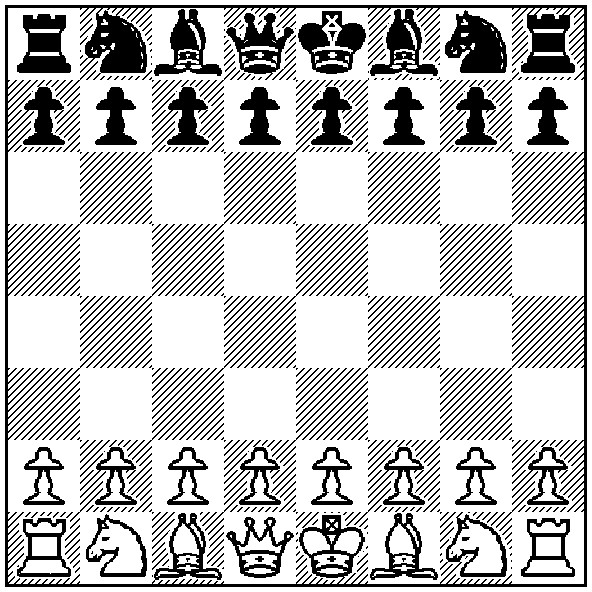
In all printed diagrams, White army to be at the bottom of the board and the Black army at the top.
light square on the right-hand side.
The queen always stands on the square of her own colour.
The Pawn
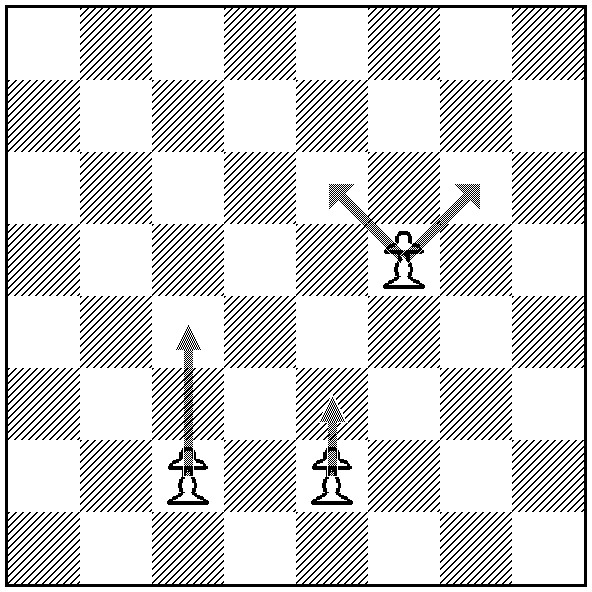
A pawn only move one square forward at a time. Pawn can never move backward.
When a pawn makes its very first move it has a choice, it can either move one square or two.
However, it moves one square only till the end of the game. Although a pawn moves straight it
captures diagonally one square forward.
captures diagonally one square.
Pawns can never move backwards.
Pawn Promotion

If a pawn reaches the other end of the board , it can be promoted to any other piece
of its own colour except the king or a pawn.
The Knight
The knight moves in an L shape in any direction.
1) It moves two squares horizontally and one square ahead or backward.
2) It moves two squares vertically and one square left or right.
3) Only the Knight can jump over the other pieces
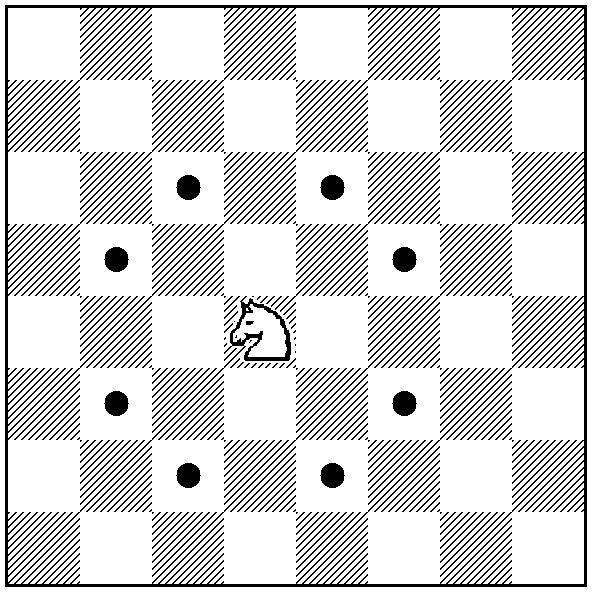
The knight is the only piece, that may jump over pieces in its way.
the white knight can move to any of the highlighted squares in the diagram below.
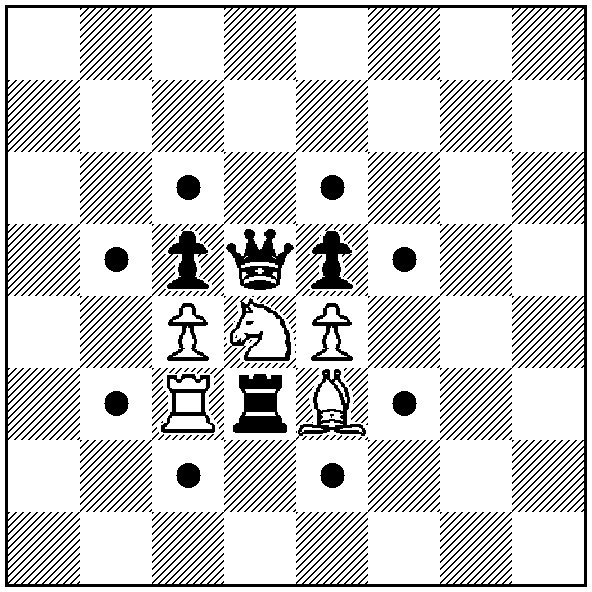
The Bishop
The bishop moves diagonally any number of squares, forwards or backwards as long as its path is not blocked by other pieces.
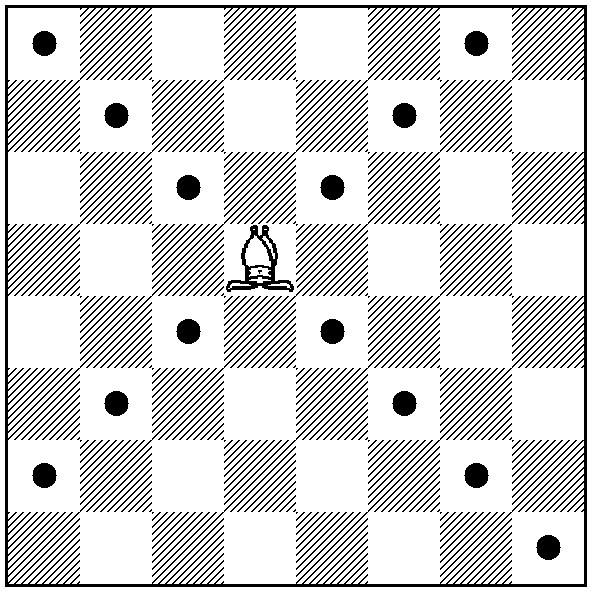
The Bishop can now only move to the highlighted squares
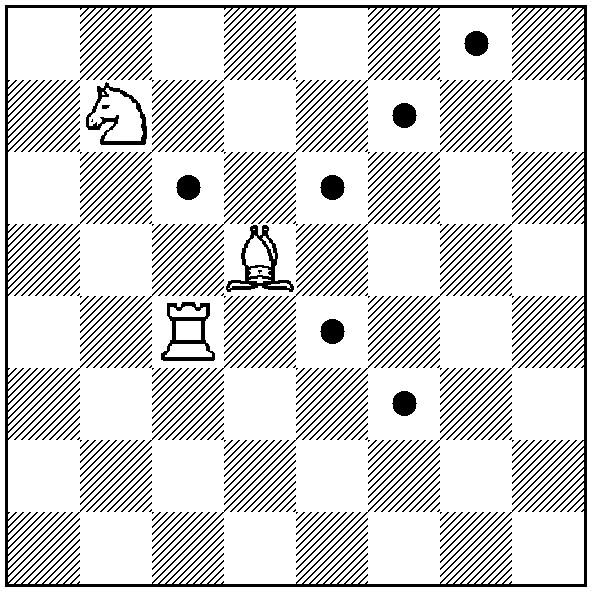
The Rook
The rook moves horizontally and vertically any number of squares, forwards or backwards as long as its path is not blocked by other pieces.
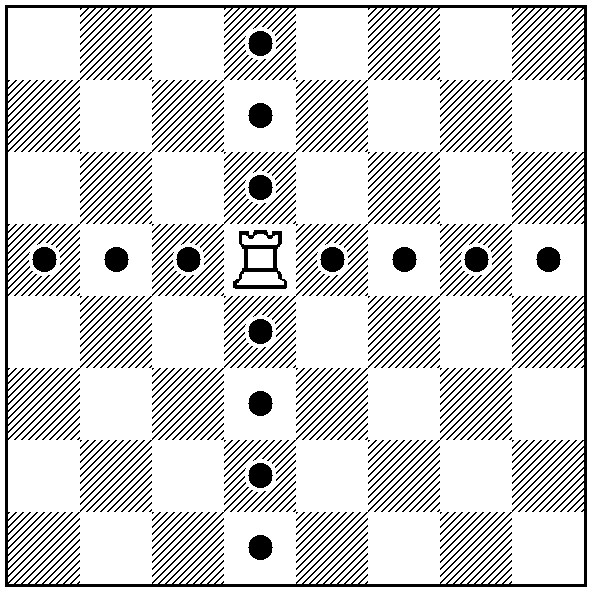
The rook can now only move to the highlighted squares.
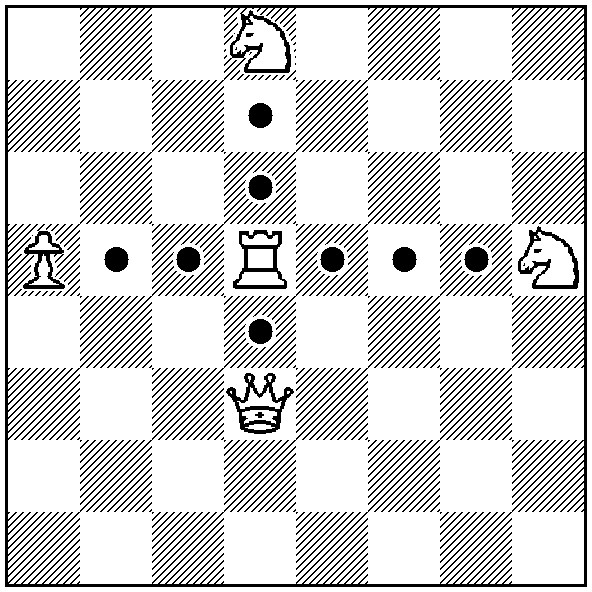
The Queen
The Queen can move any number of squares horizontally, vertically, or diagonally. It can't move over the pieces.
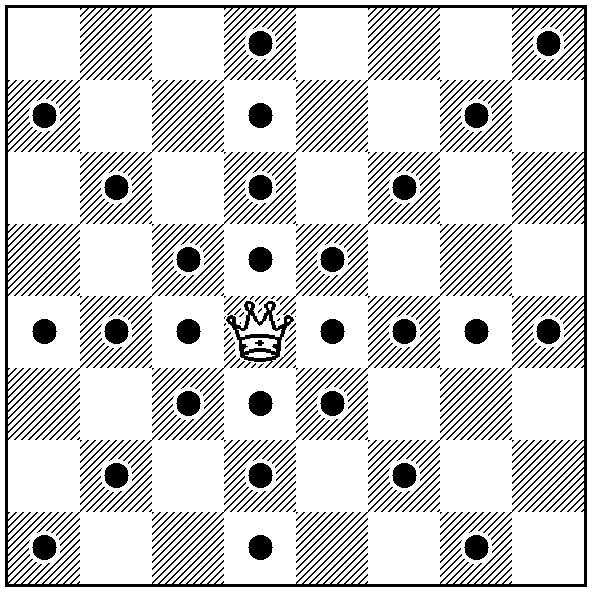
The Queen can now only move to the highlighted squares.
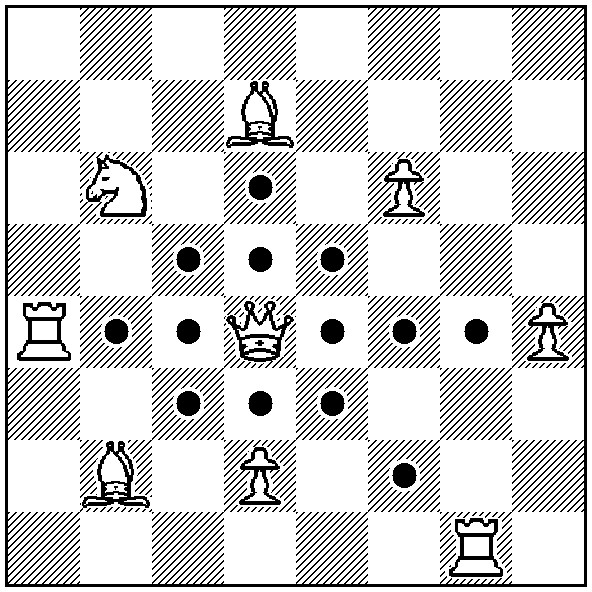
The king
The most important chess piece is the king because if your king is captured, you lose the game. The king can move one square in any direction that is not attacked by an opponent’s piece.
If it is attacked by an opponent’s piece, it is in check.

The king is the only piece that must never move on to a square that is attacked by his opponent's pieces.
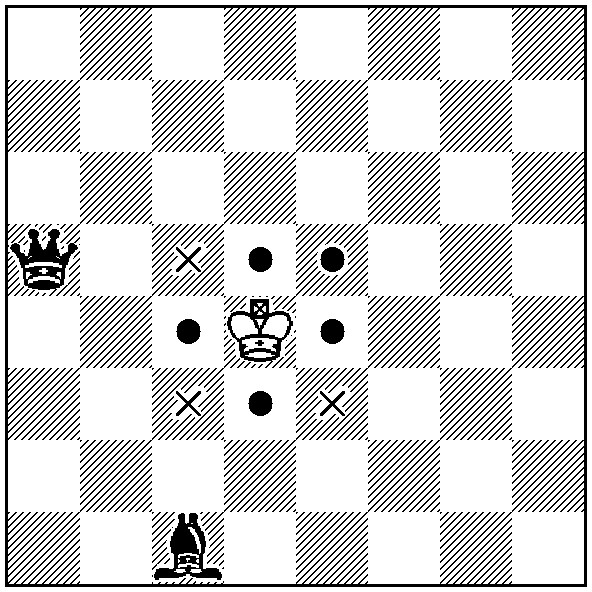
Check
When the king is being attacked directly by an opponent's piece we say that the king is in check.
In the diagram the black king is being checked by the white bishop.

If the king is in check it must be made safe immediately.
There are three ways to get out of check !

The king can move to a square that is not being attacked.
A piece may be moved in between the king and the enemy piece to block the check.
The piece that is attacking the king can be captured.
Checkmate
If the king is in check and cannot get out of check then is checkmated and the game is lost.
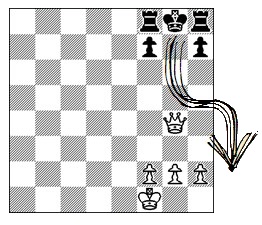
White queen checks the black king. Black is not able to do any of the following.
The king can move to a square that is not being attacked.
1. move to a safe square.
2. move a piece between the king and the enemy piece to block the check.
3. capture the attacking piece.
Black is checkmated, White wins the game!
Castling / En passant
The following rules must be met in order to castle:
1) The king and the rook that are attempting to castle did not moved already.
2) The king cannot castle out of check, through check, or into check.
3) There cannot be any pieces between you and the rook you’re castling with.
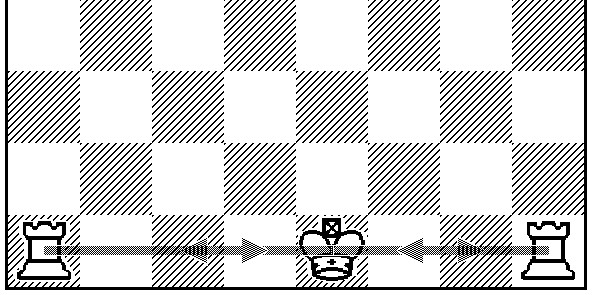
White queen checks the black king. Black is not able to do any of the following.
The following rules must be met in order to do En passant:
1) The capturing pawn must be on its fifth rank.
2) The opponent must move a pawn two squares, landing the pawn directly
alongside the capturing pawn on that rank.
3) If that capture is made, it must be made on that turn.
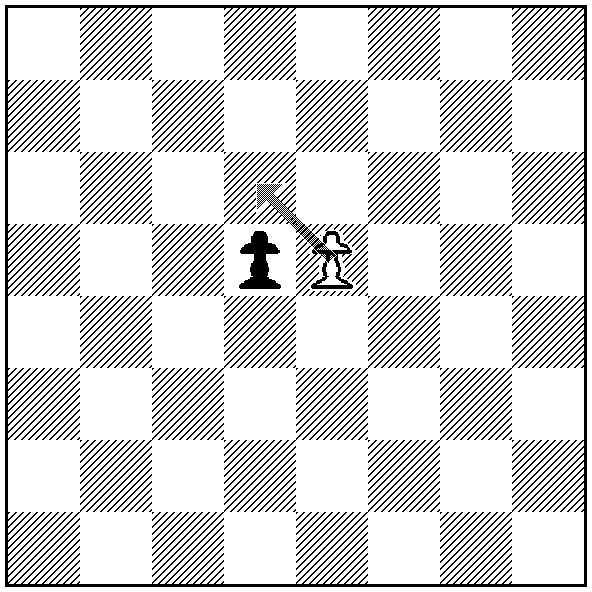
The Draw
There are six ways to draw a game of chess.
1) Perpetual Check.
2) Stalemate.
3) Insufficient mating material.
4) Repetition of moves.
5) Fifty move rule.
6) Draw by agreement.

Insufficient mating material
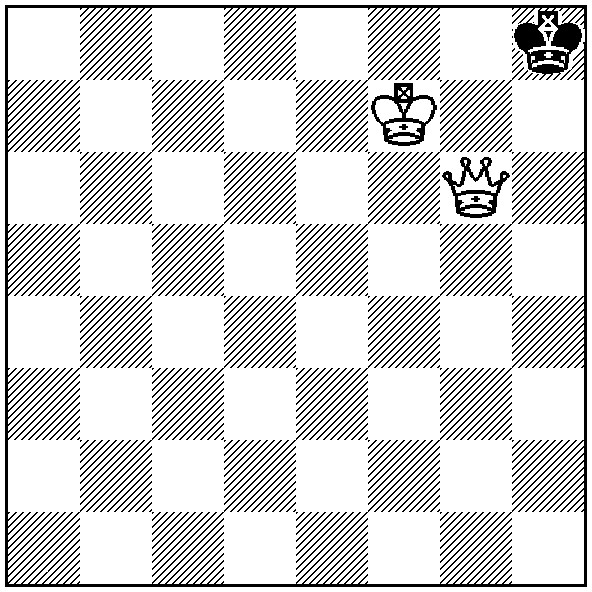
Stalemate The king is not in check. He is unable to move to a safe square